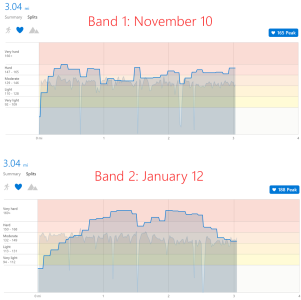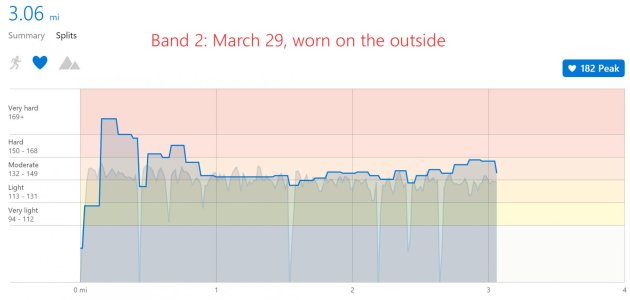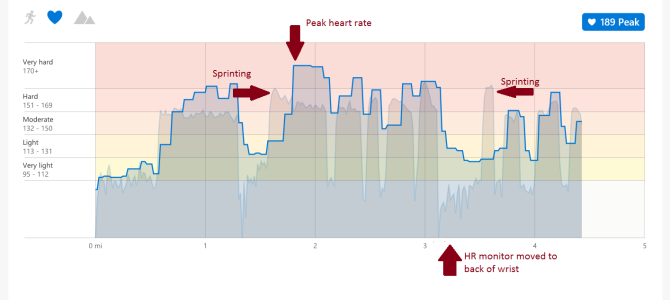Throughout the day, and even while sleeping, the heart rate numbers reported by the band2 seem reasonable to me (say, 50-60 at night, 65-80 when awake at rest, and a bit higher when more active). But when I'm running, the numbers climb up into the high 180's and the high end of my reported range extends up to about 189.
Now, I'm over 50 and not running very fast or working very hard (say, 10-minute miles), so I seriously doubt my rate is that high. That actually seems like it would be dangerous if true. But I really don't believe my actual heart rate exceeds 160 or so, and when I pause to check my pulse manually it doesn't seem very high. I believe that on the high end, the band is reporting numbers around 30 bpm too high.
Are others seeing this behavior? I wasn't seeing this issue with the band1.
Now, I'm over 50 and not running very fast or working very hard (say, 10-minute miles), so I seriously doubt my rate is that high. That actually seems like it would be dangerous if true. But I really don't believe my actual heart rate exceeds 160 or so, and when I pause to check my pulse manually it doesn't seem very high. I believe that on the high end, the band is reporting numbers around 30 bpm too high.
Are others seeing this behavior? I wasn't seeing this issue with the band1.





